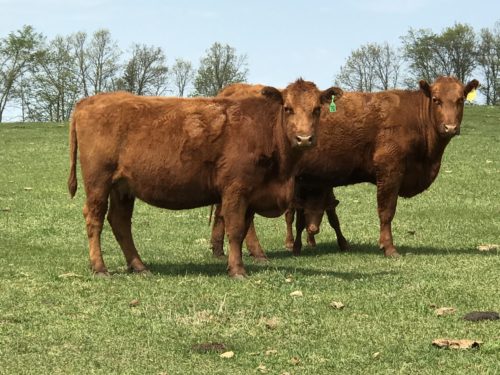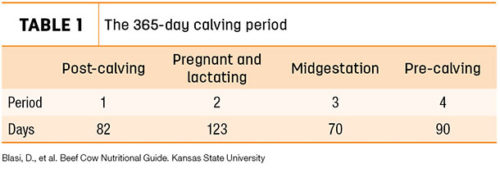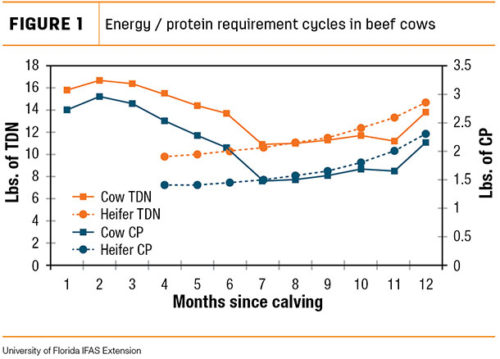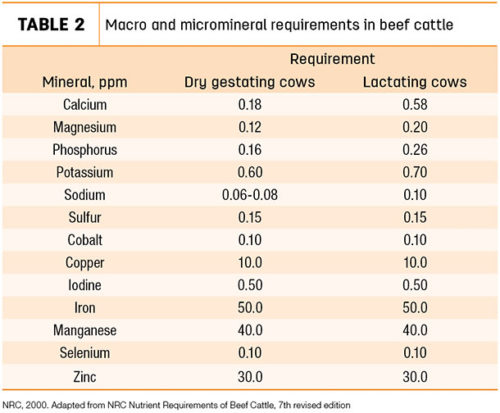Nutrition for calving periods: What’s in your toolbox?
Posted: January 22, 2021 | Written By: Heidi Doering-Resch, M.S. - Form-A-Feed Nutrition and Production Specialist

Article originally written for and published by Progressive Cattle.
It doesn’t seem like it’s that time, yet here we are in the new year and the freshness of new birth as calving time is around the corner.
Among many of the stressors we as cattle producers have felt this year, calving season can by far be one of the biggest for both cattlemen and cows as you have a calving window in which all of your potential profits for the upcoming year will be born or bred. In the Midwest, we say a little extra prayer that winter weather cooperates with calving season and allows the excitement of new birth to renew our souls.
Every cattle operation should have their calving toolbox updated prior to that first calf hitting the ground. Common needs and discussions that need to occur prior to calving include:
1. Body condition scoring (BCS) your cows
2. Understanding the cow’s nutritional needs prior to and through lactation
3. Providing a properly formulated mineral program for your region and stage of production
4. Working with a qualified nutritionist and veterinarian
5. Having supportive equipment to deal with cold, snow and emergency situations
6. A positive attitude
Stress and nutrition play a very large part in how successful your calving period will be. Having cows and heifers that are in the ideal body condition score at calving is the easiest and cheapest way to set your cows up for a successful calving and post-breeding period.
Body condition scoring your cows and having them in the appropriate condition at calving, a BCS of 5 to 5.5 for mature cows and 6 for heifers, is linked in many research studies to more profitable cows, healthier calves and more profitable calves. Keeping only cows that can maintain their condition, or come back into condition easily and breed back within the 82 day post-partum interval to ensure a 365-day calving interval (283-day gestation + 82-day post-partum interval = 365 days) (see Table 1), saves you further stress as they save you labor, feed resources and repeated breedings.
Cows that are in a BCS of 5 to 6 at breeding tend to have a shorter post-partum interval, an average of just 55 days.
If you haven’t taken the time to understand the BCS system, there are many web-based and print educational materials to help train you on the 1-to-9 BCS scale. The University of Nebraska has a nice tutorial on BCS your herd (Nine point body condition scoring). Scoring cattle 90 days prior to calving and again at calving will help provide insight as to if you need to add condition prior to calving and just how much feed resources you may need above their requirements.
While BCS is one of the cheapest tools you have to get ready for calving season, it’s also important to understand your cows’ nutritional needs and when their requirements for energy or protein do in fact increase (see Figure 1).
A common misconception is that protein requirements increase above their energy requirements prior to calving. While these requirements both increase, protein requirements don’t peak until lactation, while energy demands increase more the last 90 days prior to calving and through peak lactation. Overfeeding protein can result in larger calves at birth, which may cause calving difficulties. It is also important not to overfeed cows both prior to and after calving, as maintaining the integrity of the cow’s milk bag also comes into play.
Having a balanced feeding program for your cows through lactation includes the use of a quality vitamin and mineral supplement. First and foremost, a supplement must be palatable, whether you utilize lick tubs, liquid or loose minerals. Cows whose vitamin and mineral requirements are met will produce higher-quality colostrum, better egg quality during rebreeding or artificial insemination and be able to support the differing demands of lactation and rebreeding.
Mineral programs are not all the same; technological advances in organic-type minerals has improved the bioavailability of minerals supporting the cow’s biological system and are worth the investment. Vitamin and mineral requirements can be confusing. It is important to work with a qualified nutritionist who understands the cow’s nutrient requirements (see Table 2) so that you can supplement your herd without overspending.
Working with a nutritionist who understands the demands and goals of your beef cattle operation is integral in helping to support the high demands of production, the environmental impacts facing your cows during this high-stress time as well as providing someone who can help you balance rations for least- cost supplementation. The overall goal for beef cattle production is to have a profitable herd.
This means breeding cows in an appropriate calving interval, not overfeeding or underfeeding, supplementing with a palatable vitamin and mineral supplement and understanding your cost of production at each stage of the cow’s life. There is no “one size fits most” when it comes to beef cow mineral lines. The cow’s mineral and vitamin needs change with type of feed and seasonal demands on the cow.
Your veterinarian is certainly someone who can help you understand potential issues with health that may arise both in the cow herd and in newborn calves. Having a healthy relationship with your veterinarian can greatly impact total survival rate when an outbreak occurs.
Having a veterinarian and nutritionist who work together for the common goal of your operation is hands-down one of the most important relationships your team can foster. Having everyone on the same page and in discussion can reduce the time it takes to treat and make nutritional changes should something unexpected pop up.
As always, prior to calving season, be certain you have all of your equipment disinfected and close at hand. There is nothing more frustrating than having an emergency and not being able to find your calving chains.
Lastly, remain positive. The birth of new calves from mamas you’ve worked years at keeping good records on and improving your productivity is an exciting time. There will be shortcomings, but it’s important to remember that this is a chance to start afresh with one of the greatest creatures God has put on our earth. Enjoy the season of rebirth.


